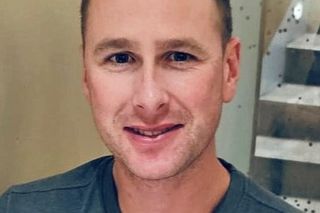Lindy, baby Azaria and the dingo
Down the decades there have been inquests, legal inquiries, a docu-drama, a trial, several books, a TV mini-series and a Hollywood movie. The tragic story of Lindy Chamberlain, the mother who claimed her baby daughter had been carried off by a wild dingo, caused a cultural earthquake and had massive implications for the family at its centre. As yet another inquest opens, Julia Molony revisits the bizarre case
ICONIC CASE: Lindy Chamberlain was, at first, upheld as an image of evil after the disappearance of her baby daughter Azaria at Ayers Rock in Australia’s Northern Territory in 1980, but she is now seen more as an emblem of justice gone wrong. A new inquest into the case has been opened
During the trial of Lindy Chamberlain, the young mother accused of murdering her nine-week-old baby daughter Azaria in the early Eighties, bumper stickers relating to the case proliferated across the vast nation of Australia.
"The Dingo Is Innocent!" declared some, "The Dingo Did It," retorted others. It was evidence of how deeply the country lay in the grip of the details of this sensational case, which were often chilling, and regularly absurd.
Characteristically Australian black humour became just one collective expression of a national obsession, but there were many others too -- hysteria, vilification, contempt, and later, as the story continued to develop over intervening years, (though as yet never resolved) remorse, contrition and shame.
Last month, Elizabeth Morris, coroner for the Northern Territory, announced that she will open yet another inquest into the death of the infant Azaria Chamberlain. There have already been three coronial inquests into the case, plus seven legal inquiries, an 11-month commission of inquiry and a seven-week trial. And that's to say nothing of the investigations and treatments of the story in the media and in popular culture, which include a docu-drama, several books, a television mini-series, a Hollywood feature film starring Meryl Streep, and an opera.
Few modern murder trials have caused such a cultural earthquake. The image of the young mother from New Zealand, a pixie-faced woman with a rather severe pudding-bowl haircut, sitting heavily pregnant in the dock, has become iconic. At first upheld as a vision of evil, she is now an emblem of justice gone wrong.
Lindy Chamberlain served three years in prison, and even gave birth to a daughter there, having been wrongly convicted of murdering Azaria, before the miscarriage of justice was overturned. With hindsight, it seems she fell victim to a myth. It seemed almost as if a gothic fairytale of a cold-hearted murderess taking the life of her own daughter, was too irresistibly sensational to resist.
Buoyed by public anger and wrong-footed by the baffling sang-froid Lindy displayed following her daughter's death, a jury concluded she was a killer. They were ushered towards this misjudgment with the help of, according to the Chamberlains, an allegedly biased police force and incompetent forensics. The evidence was scant and unreliable. But the main agent in this miscarriage of justice was prejudice.
In June 1980, the Chamberlains, a young married couple took their two young boys, six-year-old Aidan and four-year-old Reagan, and baby daughter on a camping trip to Ayers Rock in Australia's Northern Territory. They were in many ways an unremarkable middle-class family. Lindy was New Zealand born, but had moved with her family to Victoria, Australia, while still a toddler, when her father became pastor of a local church there. The family were committed Seventh Day Adventists and Lindy's husband Michael was a pastor too. Like her, Michael had also been born in New Zealand.
They married when Lindy was just 21, and the early years of their marriage sound largely tranquil and conventional. They moved about quite a bit, from Tasmania to northern Queensland. Lindy qualified as a dressmaker, a skill that she would turn to later on, hand sewing dresses from jail for the baby that had been taken away from her at birth and placed in foster care while she was returned to her cell.
The camping trip they took to Ayers Rock that year changed everything, profoundly, and forever. The place was, and remains, a beautiful holiday spot. Indeed, the setting of Azaria's death has an almost theatrical sense of drama. The eerie, otherworldly monolith, now known as Uluru, looms in the background, dominating a wilderness so vast and unpopulated that its poetic desolation has inspired countless horror movies.
Lindy had brought Azaria and Aidan to the family tent, where four-year-old Reagan was already sleeping, and left them for a few minutes with the tent unzipped while she went to get something from the car. What happened in the intervening moments has been debated exhaustively, but shortly afterwards, the stillness of the night was broken by a cry that was to echo across the media for the decades to come. "My God, My God, the dingo's got my baby."
A massive search party involving 300 people was dispatched across the vast and forbidding local area, riddled with dingo lairs.
An initial inquiry into the disappearance in early 1981 supported the Chamberlains' account of events and concluded that the baby had been taken by a wild dog. But later that year, the police force launched a new investigation, Operation Ochre. They raided the Chamberlains' home, and began building a case against the couple.
During the subsequent trial, the prosecution proposed that on the evening of June 11 at Ayers Rock, Lindy had, in fact, carried the child to the family station wagon, cut her throat, and stashed the body inside her husband's camera bag. They argued that Michael (who was later convicted of accessory to murder) became aware of the incident not long after, and that while the search party was dispatched, the baby's body was hidden in the car, and disposed of later by the couple. It was claimed that after the death, Azaria's jumpsuit, which was found in the search, though the body was never recovered, had been cut with scissors to make it look like it had been ripped by teeth. The prosecution did not claim to identify a motive for the killing, though possibilities mooted in the public domain ranged from plausible-sounding explanations, to the absurd. Lindy was suffering post-natal depression, some averred, or she was covering up an act committed by her eldest son. After all, six-year-old Aidan had been awake in the tent at the time of Azaria's disappearance and was thus the only witness to what happened.
The more fanciful notions centred on the idea that Azaria was sacrificed as part of some twisted religious ritual. Rumours took seed and proliferated like weeds. Much of the speculation centered around the Chamberlains' faith. As Seventh Day Adventists, the niche nature of the sect drew suspicion, with many people characterising it as a cult. Far-fetched gossip circulated around the globe, including the suggestion that the couple always dressed their baby in black to represent the devil's child (a detail that seems closer to the plotline of Polanski's gothic horror Rosemary's Baby than any recognisable reality) that the name Azaria, meant "sacrifice in the wilderness" and that a bible belonging to the Chamberlains had been found with a passage concerning child sacrifice underlined in red.
By Lindy Chamberlain's more prosaic, but equally tragic, account she returned to the tent where she had put her baby to sleep to find the bassinet empty and the tent mattress covered with blood. As she approached the tent, she claims that she saw a dingo slinking into the darkness carrying an unidentifiable bundle in its mouth. For 30 years, in the face of a seemingly endless roll call of court officials, she has sought to have it legally declared that that bundle was her baby.
"I see the tent and the dingo coming through the open flap," she said after her release of her recollections of that awful moment. "I see the empty carry basket and feel the blankets still warm. I can hear myself calling out and feeling utterly helpless, knowing that my beloved baby daughter is out there somewhere and needs my help, but there is nothing I can do."
From the outset, the Australian public did not warm to Lindy Chamberlain. As the case against her grew, more and more people tried to take their cues about her character from her demeanour in front of the news cameras. By her own description, her face looks "severe in repose". Many members of the public, she has acknowledged, fancied that she had "killer eyes". In her engagements with the media following her daughter's disappearance, she did seem to convey a rather extraordinary emotional remoteness. The public puzzled over the reasons why Michael and Lindy had not joined the search party that went out to scan the area for the child. When asked about this later she explained that she believed at this stage that Azaria was already dead.
"We asked Derek Ross, the head ranger did he know anything about dingo attacks, and well, one thing he said to us was, I believe that your daughter's death would have been very quick. It would have been over very, very quickly," she said.
But the Australian nation watched aghast as shortly after Azaria's disappearance, Lindy gave a blow-by-blow account of what she believed happened to her baby, with what seemed like academic detachment. "They use their feet like hands," she told a reporter, of dingo hunting methods, while considering a photograph of her baby's bloodied jumpsuit, "and pull back the skin as they go, and they'll just peel it like an orange".
She since explained her comportment as a self-protective reaction to the scrutiny she was under. "I can remember at the time being quite annoyed and irate at people saying it wasn't possible," she said after her release. And I knew that it was ... . Walking into court, they'd say, 'there she goes again that hard-faced bitch,' and looking at it, I would agree with them. But if I cried, I was putting on an act for the public, if I smiled I was heartless ... and so you're sort of caught in between, and besides, you sort of freeze. With everybody staring at you, and you know they're looking at you, you know they're ready to jump one way or another."
Despite the severity of her haircut, Lindy had a homespun sort of glamour, compounded by the pretty dresses she wore in court every day. Commentators accused her of turning the trial into a fashion show. That female deadly sin, vanity, was mooted as further evidence of the corruption of her character.
"It's hot," she explained simply, later on. "You change everyday. It was just because I happened to be the one they were looking at."
The conviction, when it came, was predicated on forensic evidence that seemed damning on the face of it. Scientists claimed that blood from the baby was found on the dashboard of the car. A British expert on dingo behaviour testified that it was against the nature of the wild dog to carry off a baby. This evidence, however, was later found to be flawed. "Bloodstains" in the car, upon further investigation, were revealed to be milkshake, mixed with copper dust from the town where the family live.
Lindy has always maintained that she was the victim not just of forensic incompetence, however, but a more sinister vendetta.
"It was quite obvious by the time we got to the trial that it didn't really matter much what we said, the Northern Territory was not prepared to listen," she told the Australian edition of 60 Minutes soon after her release. "They'd said to me outright, if we don't get you this time, we'll get you next time, or we'll have this inquest annulled and we'll have another one until you get charged because we're going to get you."
The chance discovery of the matinee jacket that Azaria had been wearing the night she disappeared was the key piece of evidence that finally overturned the case.
Lindy had already served three years of her sentence when an English holidaymaker fell to his death in the area in which Azaria had disappeared. When his body was found, it was lying near the jacket, half buried among dingo lairs.
In an unprecedented move, a Royal Commission was established to re-examine the evidence and just a few days after this new discovery Lindy was released from jail. The commission, and further inquiries however have all recorded an open verdict to the case, ruling that the cause of Azaria's death is inconclusive.
Further rumbles of rumour and intrigue relating to this case have emerged periodically over the years to reignite the mystery and churn the public into freshly devisive speculation.
In 2004, an 87-year-old man went public with a claim that he and some friends had shot a dingo carrying a baby that night, and that one of his companions, now dead, had disposed of the body. But his claims were dismissed as fantasy and never substantiated by police.
Next month, however, when the inquest reopens one more time, Lindy Chamberlain will be presented with another chance to have the strength of her word reinforced by law, something that she has campaigned for tirelessly since her daughter's death.
Much has been sacrificed along the way. A few years after her release, she and Michael divorced. They had been bonded together for so long in pursuit of a common goal, but it wasn't enough to hold them for life. Both have since remarried and Lindy now describes her existence as relatively contented. "Three decades on" she says, "I have a good life, even if it is very different from the one I might have expected." Michael too, has remarried and has a daughter Zahra with his new wife.
After embarking on a career in public speaking, Lindy now spends her time on that and renovating houses for sale with her new husband. But she has suffered greatly, as have her family. Her daughter Kahlia spent her early years in foster care while her mother was in jail. Her son Aidan faced suspicion himself, from his contemporaries and the press, and the possibility that he might have killed Azaria was even addressed at one of the inquests.
These days, however, by Lindy's account, her children are well. In recent years, Aidan and Kahlia both married, suggesting that they may now have the chance to recreate for themselves the sort of steady, unremarkable domestic life that was torn away from them in childhood.
"I think I am much the same person that I was," Lindy wrote recently, "although perhaps I have more empathy than in the past."
United in the campaign with her ex-husband still, despite their divorce, the pair have presented the courts with a new dossier of evidence that cites 10 serious attacks by dingoes, two of which were fatal. With this new arsenal of information they hope once and for all to put the matter to rest.
And in a country with unknowably hostile wildlife, and sometimes, it seems, an equably hostile public, the savaging of a baby by a dingo may finally be regarded as a rare and tragic accident.
Join the Irish Independent WhatsApp channel
Stay up to date with all the latest news














